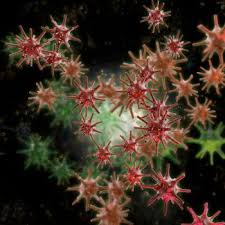Shingles on the Rise
Shingles is increasing in the United States, according to the Centers for Disease Control and Prevention (CDC), and health experts are not quite sure why.
A recent retrospective study of 2,848,765 Medicare claims showed the incidence of shingles increased 39 percent from 1992 to 2010.
About Shingles
 Nearly a third people in the U.S. will develop shingles, otherwise known as herpes zoster or simply “zoster,” during their lifetime. While most people who get shingles will develop it only once but some get the disease two or three times. The risk of shingles increases with age, especially after the age of 50. Children can get shingles, but it is uncommon.
Nearly a third people in the U.S. will develop shingles, otherwise known as herpes zoster or simply “zoster,” during their lifetime. While most people who get shingles will develop it only once but some get the disease two or three times. The risk of shingles increases with age, especially after the age of 50. Children can get shingles, but it is uncommon.
Signs and symptoms of shingles include pain, itching, or tingling of skin just before the development of a painful rash of blister-like sores. Symptoms typically develop on one side of the body, often on the face or torso. Fever, headache, chills, and upset stomach may occur. Severe pain in the affected area, known as postherpatic neuralgia (PHN), is the most common symptom of shingles.
Shingles develops as the result of exposure to the varicella zoster virus (VZV), which is the same virus that causes varicella disease, also known as chickenpox. The virus remains dormant sensory ganglia after the individual recovers from varicella; the virus can reactivate to cause shingles years later.
Are Chickenpox Vaccinations Accelerating the Increase of Shingles?
Researchers are still working to understand why the virus reactivates. It appears that an individual’s risk for shingles increases as immunity to VZV declines, as happens with aging or with the development of immunodeficiency associated with certain illnesses or treatments.
Some research suggests that exposure to varicella disease can actually boost immunity to VZV and reduce the risk for reactivation as shingles. Other research does not show this effect and the results “reflects the uncertain influence of varicella circulation on zoster epidemiology.”
Rates of chickenpox fell dramatically in the years following the implementation of the childhood varicella vaccination program in 1996, leading some scientists to speculate that the rise in shingles in adults was the result of childhood vaccination against varicella. These researchers reasoned that adults exposed to children with the virus would build immunity against varicella, and that widespread vaccination of children would provide fewer opportunities for adult exposure.
Results from a recent CDC study seem to disprove this theory. Researchers in that study used Medicare data from 1992 to 2010 and found that shingles rates  were rising even before the introduction of the varicella vaccine in 1996. Furthermore, zoster rates did not accelerate after the introduction of the program.
were rising even before the introduction of the varicella vaccine in 1996. Furthermore, zoster rates did not accelerate after the introduction of the program.
The researchers in the CDC study also looked for any link between state varicella vaccination coverage and zoster rates, and found that the rates of shingles did not accelerate as states increased vaccination coverage. In fact, the incidence of shingles was the same in states with high vaccination coverage as it was in states with low coverage.
Furthermore, countries without routine varicella vaccination programs are experiencing similar increases in shingles rates in adults.
Like the wild-type virus that occurs in nature, the attenuated vaccine virus can reactivate to cause shingles. Children who get the varicella vaccine appear to have a much lower risk for childhood shingles than children infected with the wild-type virus. Vaccinated children are also less likely to be infected with the wild-type virus, which is more likely to reactivate as shingles as compared to the weakened vaccine virus.
While scientists have yet to discover the reasons behind the increased incidence of shingles, it is clear that zoster vaccination can prevent many cases of shingles, both in adults and in children.
Source
http://www.cdc.gov/shingles/surveillance.html
http://annals.org/aim/article/1784289/examination-links-between-herpes-zoster-incidence-childhood-varicella-vaccination
https://www.ncbi.nlm.nih.gov/pubmed/12057605
https://www.ncbi.nlm.nih.gov/pmc/articles/PMC2866606/
http://www.cdc.gov/mmwr/preview/mmwrhtml/00039897.htm
https://www.ncbi.nlm.nih.gov/pubmed/21217180
Frank Magliochetti is Managing Partner for Parcae Capital.
-
North Andover, Massachusetts
This column of posts is directed at the Healthcare Industry. Frank plans to release a new site dedicated to the industry. He currently assists companies who are building, restructuring, transforming and resurrecting there business’s. An example of his client base are, Xenetic Biosciences , IPC Medical Corp, Just Fellowship Corp, Environmental Services Inc., Parsons Post House LLC, ClickStream Corporation as well as having a business talk radio show; The Business Architect on the URBN network.








